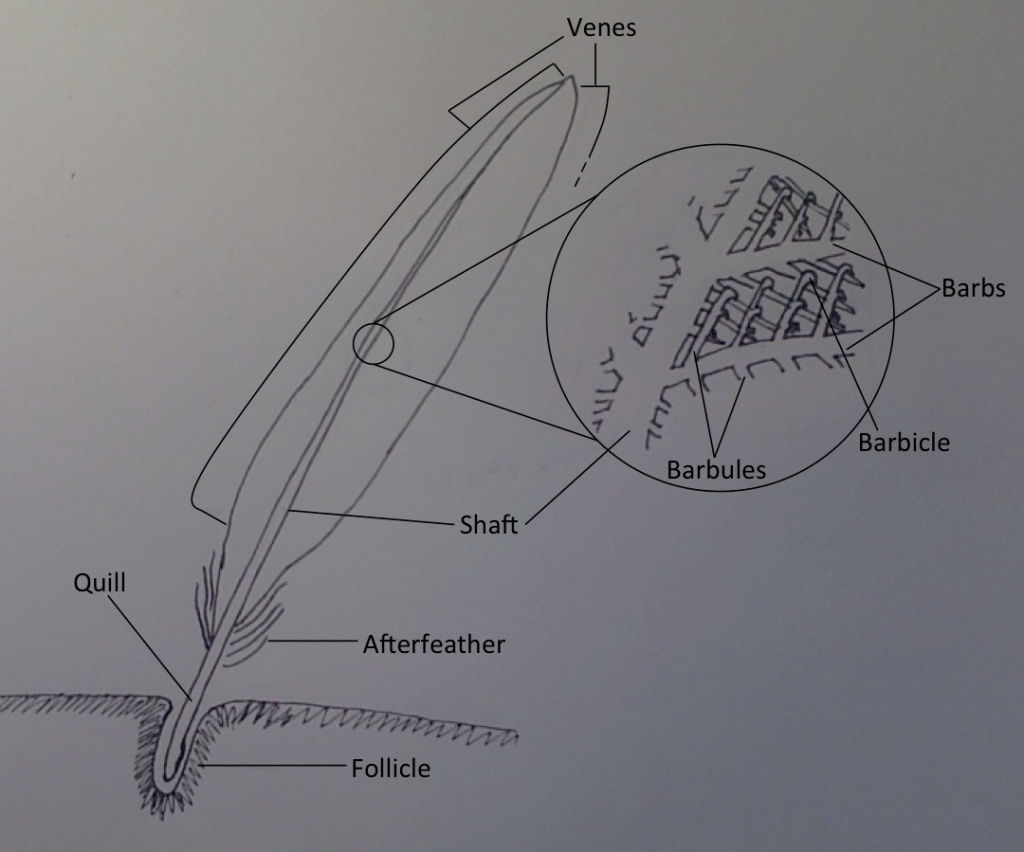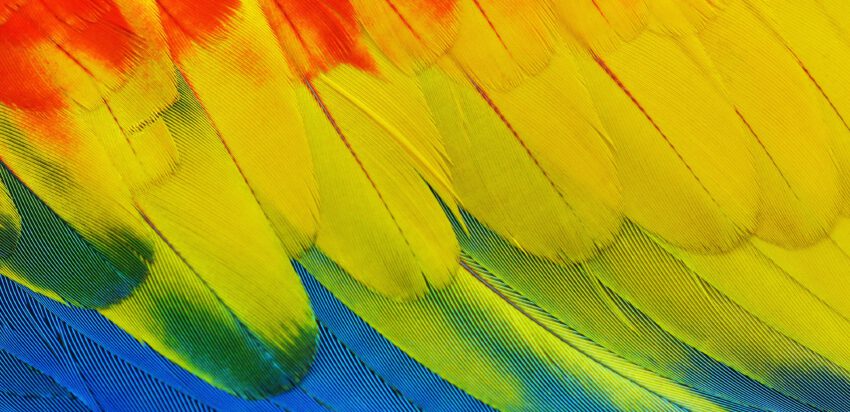Birds don’t have hair, they have feathers. Mostly. Usually. (Recent studies show it is probable that many dinosaurs were feathered too!)
Like us, in their skin they have follicles from which the feather grows.
The main hard bit, the “spine” of the feather is called the shaft or rachis.
The part of the shaft that attaches the feather to the skin is called the calamus or quill. Quill may be familiar, as we used to write with goose feather quills, before we had fountain pens.
The soft parts emerging left and right of the shaft, are called vanes.
If you look closely, you can see that the vanes are made out of many, many barbs.
If you look even closer (you need a microscope or at least a very serious magnifying glass), these barbs are sticking together because they have barbules on either side of them, where the barbules of one barb are holding on to the barbules of the next barb, using tiny hooks called barbicles.
Then there is the afterfeather: the barbs, usually close to the quill. They are downy and lack barbicles so they don’t stick. The goal here, is to keep the bird warm.
This is the best I can do with words. Here’s an extremely simplified picture I drew.

Because of this barbule-barbicle-awesomeness, feathers work so well in helping birds fly. And the amazing part is, if a feather gets messed up a little, the bird can fix it by running the feather through it’s beak. It’ll work with your fingers too.
+Title image by David Clode


“barbule-barbicle-awesomeness” !!
Words like this are why I love this blog! Thanks for the feathery info, Malu! Keep up the good work!
Hahaha! Thank you!